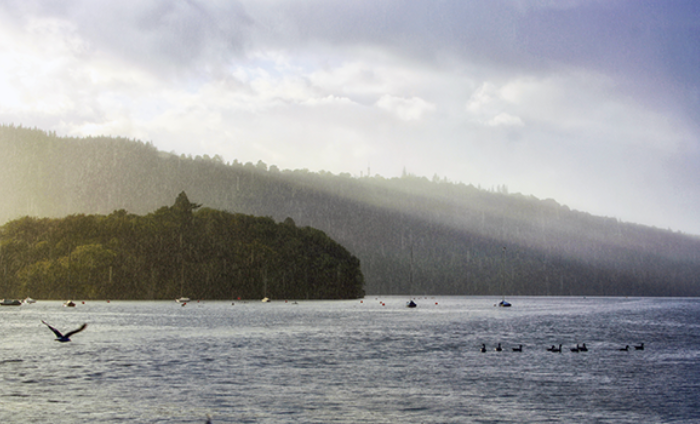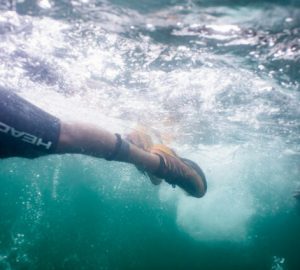
Swimming in the rain: is it safe?
Making the most out of a rainy swim all comes down to the right kit and preparation
“Swimming in the rain, just swimming in the rain, what a glorious feeling, I’m happy again!” There is something joyous about swimming in the rain, revelling in water above, below and around you. The splash of raindrops on the water, the fresh smell of a world cleansed, the pitter-patter sound as water returns to water. It is one of my favourite experiences, swimming in the lake as rain and mist descend, obscuring the mountains, washing away my troubles.
But, let’s face it, rain can be a bit miserable too. Yes, you are wet in the water anyway, but what about before and after? As usual, it all comes down to the right kit and preparation.
Gear
Think about where you leave your kit on the shore and how you can keep it dry when you are in the water. Top tip: I always make sure my shoes are either turned upside down or are under my bag – there is nothing worse than putting your shoes on to find they are full of water!
A large dry bag is a great investment to keep all your kit dry when you are swimming. Smaller dry bags for wet trunks and towels will stop everything else in your bag getting damp.
As well as getting wet in the water, you are going to get wet on the land, so decent waterproofs are a good idea. A waterproof changing robe is a godsend when it is pouring down – you can get changed under it and keep your clothes dry at the same time. For before and after your swim a good waterproof coat is essential.
Be weather aware
Be aware that rain can bring with it other changes in weather: thunder, lightning, high winds and reduced visibility – as well as a drop in temperature. Always perform a risk assessment and don’t swim in dangerous conditions. Here is an example of how quickly conditions can deteriorate. In 2017 I took part in the Ötillö Swimrun Engadin. It was a beautiful sunny day, but coming down off the mountain for the penultimate swim it suddenly started to rain. By the time we were in the water the wind had picked up and what was a flat lake now had huge breakers. It then started to thunder and visibility dropped to a few metres; I could hardly see my race partner let alone the flag on the opposite shore. In just a few minutes conditions had changed dramatically. The safety boat called the swim off and directed us back to shore to run around the lake instead of swimming across it.
After effects
Also think about how long it has been raining. Swimming in the rain is fun, but swimming after heavy rain not so much. Heavy rain can increase the flow in rivers, creating strong currents and increased water levels. The water could also be colder than you are expecting, with cooler water from higher ground washing downstream. Heavy rain also washes pollutants into the water, both in urban and rural areas. And then there is sewage, which can enter our rivers, lakes and seas after a heavy downpour. Leave at least 48 hours after heavy rain before swimming.









